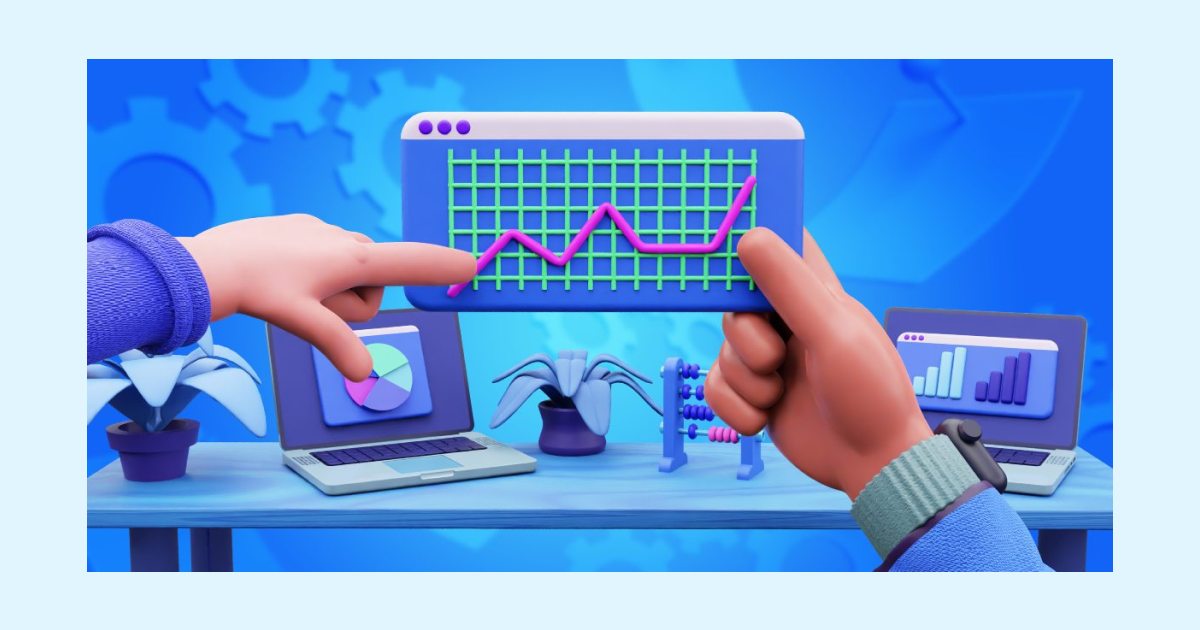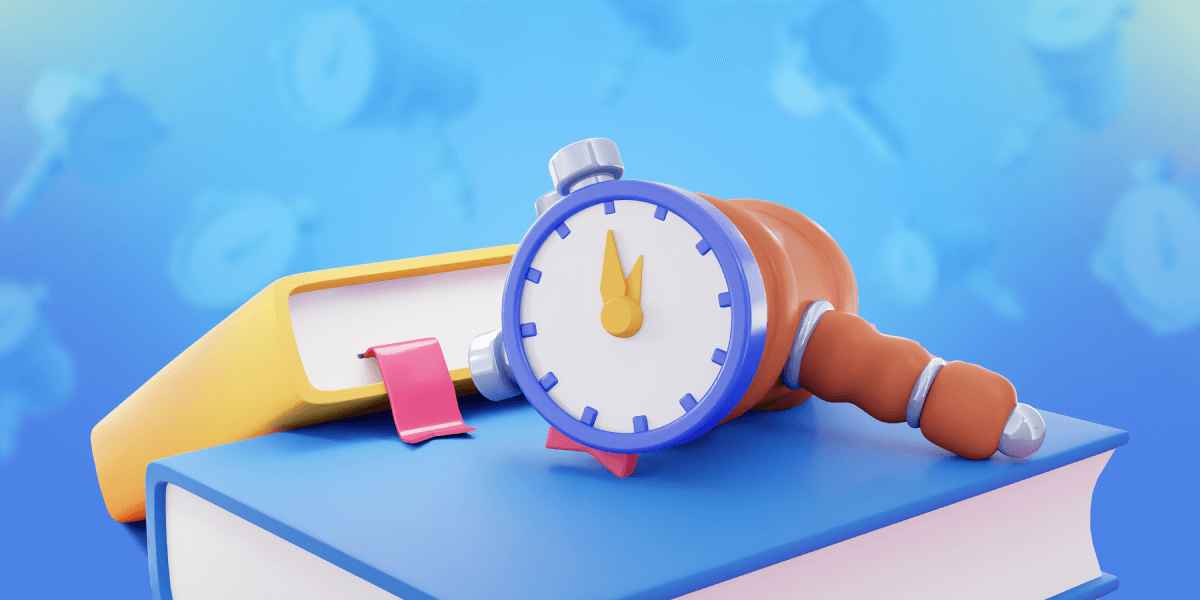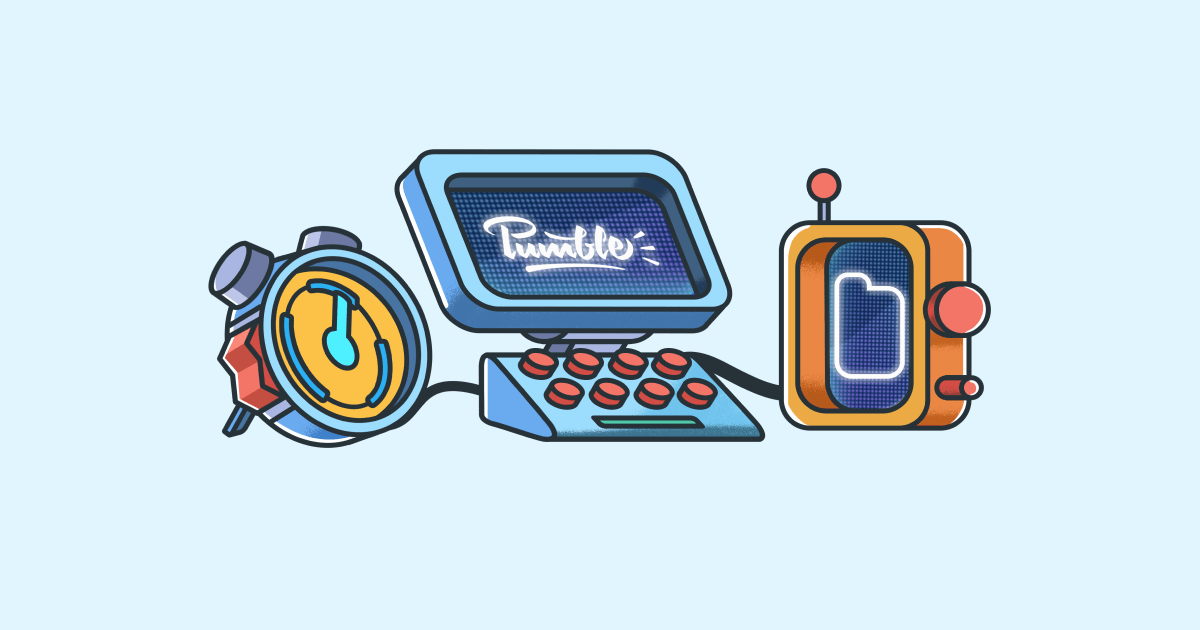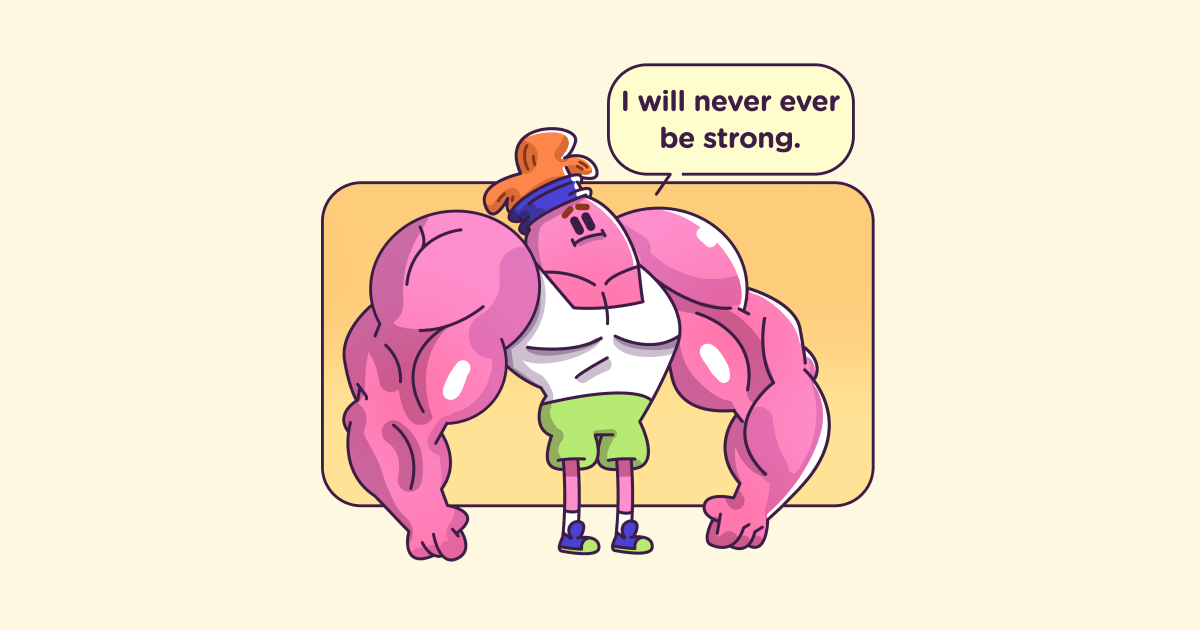Personal productivity guide: Maximize productivity with these methods and apps
Last updated on: September 13, 2022
Personal productivity plays an important role in our everyday activities, especially those related to our job. There are those lucky days when we’re effective enough to complete our assignments easily. Unfortunately, there are also moments when we’re struggling with even the simplest tasks.
But, guess what, there are many ways to beat this lethargic time.
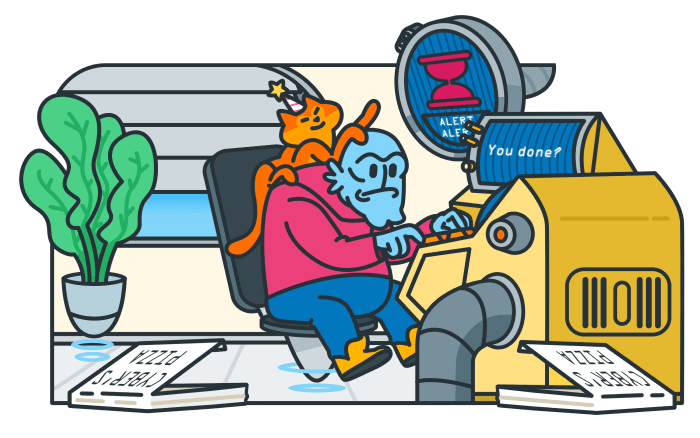
In this article, we’ll show you numerous easy-to-follow steps that will boost your productivity no matter what aspect of it troubles you; be it distractions, difficulty focusing, dips in work quality, you name it. Here’s what you can expect:
Table of Contents
The step-by-step guide to personal productivity
Step One: “Am I really unproductive?”
Before we dive into the nitty-gritty, let’s talk about what productivity really is. Because believe it or not, the concept itself has been skewed over time, and the image we’ve ended up with couldn’t be more divorced from reality.
Unrealistic expectations
Just like with physical appearance and mental health, there is an image of the perfect productive person constructed by social media. Working on your productivity doesn’t mean you will suddenly live that minimalist-bright-apartment-and-pedantic-dreamy-furniture lifestyle. One where you’ll wake up at 6 AM every day, have your breakfast, shower and workout before 7 AM and finish everything perfectly on time.
Granted, some people can have those routines, and maintain such a minimalist life.
But for our own sanity, it’s best to look at such picture-perfect images and posts as a goal achieved through years of work and dedication. When starting from zero, baby steps are much better at keeping you motivated than a vision board of a Pinterest day-in-a-life.
What productivity really is
The concept of productivity as we know it – the ratio of input to output – has its roots in the economy. And within that context, it makes sense, as productivity directly impacts the success of various industries.
However, the problem starts when we apply the same concept to productivity in our personal lives. We aren’t machines, nor can we calculate labor quantitatively in the same way, which is why it’s necessary to redefine it.
Productivity in one’s personal life can mean different things depending on the person’s goals:
- To some, productivity means working faster, and shaving time off long processes;
- To others, being productive means focusing better, ensuring more quality results;
- And then to some, productivity is about learning how to be better organized, to use their day to the fullest.
When we look at it that way, productivity becomes a skill with different paths, all leading to one same goal: doing better work.
And so, this guide will be based on deciding which area of productivity you want to improve on, and how to do it.
Step Two: Choose an area of productivity to improve on
Speed is what we usually think of first when someone mentions productivity. We most often link it with working faster and doing more within the allotted time.
Do you want to be faster and more efficient?
For those who feel like they struggle getting things done on time because they work slow, there are several ways to improve on speed.
- Grow into a steady sleep schedule
You need to be at your best if you want to perform faster. And of course, you can’t expect to be at 100% if you wake up at 60%. Now for those who have children and babies, or work more than one job, it can be difficult to maintain a normal sleep schedule.
But, if at all possible, it’s good to pencil in days when you want to go to bed early. On those days, you can plan out your work and chores, so that you’re left with some time to care for your sleep schedule. Try to aim for 7 hours at the least, and no more than 8.
- Practice speed on other daily tasks
Working faster doesn’t come all of a sudden. You get better with time, just like with other skills: reading, writing, memorizing, etc. So, it is entirely possible to practice speed in other aspects of your life, and see how it transfers to your work.
For example, you wash dishes while lunch is cooking on the stove. In the same way, you can check email on your phone while windows updates, for example.
Likewise, if you want to get quicker at typing, simply type out lyrics of a song you’re listening to, or a cooking show, or a movie. See how much of a coherent text you can get out of it, while the audio is still going.
- Stick to a schedule
On one hand, speed is shown on how fast you perform individual tasks. On the other, it’s about how many tasks you can finish within several hours, a day, or a week. In these cases, speed is reflected in how well you can stick to your schedule.
To avoid procrastination, and retain productivity through quickness, stick to your schedule “to a T”. That means creating time blocks in your schedule (timeframes for how long you will spend on each task), and starting and ending tasks on the dot.
How does this help? You simply don’t allow one task to seep into the time required for the other task. Let’s say you start A and finish it half an hour later than intended. That means you will either have 30 minutes less to finish task B or move the entire schedule up by 30 minutes. In each case, you’re slowing down your progress.
Additionally, keeping a deadline for each task will ensure you focus better and be wiser about your approach to the said task, to keep up.
- Break down your assignments
This is a well-known piece of advice. Smaller steps help you power through projects or larger tasks.
Tackling a complex assignment in its entirety can take a lot of time and energy. Moreso if you’re not sure where to start, or the sheer volume of work overwhelms you. But, if you first break it down into tiny steps, you will not only start faster, but make it easier on yourself to progress through them at a steady pace.
Smaller, easily tackled tasks give the necessary motivation to keep working.
- Keep everything within arm’s reach
Now, this piece of advice is a little more practical. When you take a look at your desk, can you really say that everything you need for the work is within reach? Things like pens, pencils, extra paper, post-its, the printer, even!
If you aim to be quicker, then you can’t really be hopping out of your chair whenever you need something. Unless it’s for a break or a stretch, of course.
It’s best to keep all the little handy things either on your desk or in a small drawer within arm’s reach. Things like:
- Office material: scissors, post-its, markers, paperclips, calculator, scotch tape, etc;
- Snacks (nuts, fruit) for those critical blood-sugar-drop moments;
- Liquid (water, juice, coffee, smoothie).
The fewer times you get up, the lesser the odds are of something unrelated grabbing your attention, causing a distraction.
- Learn about your PC’s shortcuts
Another neat little trick to becoming faster is to get to know your PC and organize it as best as you can. Shave time off by not having to rummage through folders, filtering through emails, responding to them individually, and even using your mouse.
Here’s what you can do:
- Clean out your desktop. Leave nothing but essential folders on it;
- If you’re a Windows user, move all your programs to the bottom ribbon, as it only takes one click to start them up, rather than two, and they won’t take up necessary desktop space;
- Every operating system has numerous shortcuts – look online for a list and find ones that help you navigate the system without the need for a mouse. Just like ctrl+C and then ctrl+V is much quicker than right-clicking to copy and paste, there are hundreds of shortcuts for opening emails, new folders, moving files, etc.
Manage time better
- Get a strong head start
This tip has been adapted from Simon Reynolds’s article on Forbes. He argues we should “pretend our day ends at 11 AM”, meaning you create a time constraint where you need to finish all important tasks by then.
Reynolds also brings up a good point: usually, as we sit down to work, we don’t start working straight away. It’s coffee first, maybe a read through some online news, or videos, updating on Twitter, or having a morning chat with coworkers.
What he advises is avoiding this ritual, and instead diving into work head-on. While a casual start to a work morning can be a part of your schedule, it’s more likely to be a starting distraction. It can make you start your tasks slower and more sluggishly.
- Improve prioritization
Here on Clockify’s blog, we’re passionate believers that prioritization is the core of great time management. We’ve done plenty of articles and examples on prioritization as a time management technique. And it’s one we firmly believe leads to better time management in personal life as well.
There are a few approaches to prioritization, but the most famous one has to be the Eisenhower Matrix, where you decide which tasks are (non)urgent, and which ones are (un)important.
Knowing what tasks have the highest priority based on their importance and urgency lifts a great weight off one’s shoulders. You can make more informed decisions about how you manage time. And also, which aspects of your work require more attention, versus which ones surprisingly – don’t.
- Set clear goals
Take half an hour every Sunday night to discuss with yourself what your goals should be for the following week. What is it that you want or need to achieve?
Maybe you want to finish a project because of an encroaching deadline?
Or do you have a meeting after it that is more important?
In line with the priorities tip, it’s good to know what task (or more) is vital to your career for that week, so it gets top priority. Then, you can schedule your time in advance to ensure you give as much time to it as possible. This approach takes some getting used to, but think of it as a meal prep, so many households swear by.
They usually want to save time by not thinking about what to cook for lunch every day. So, they find recipes for the week, buy all the ingredients and plan out and prep as much as they can during the weekend. This gives their mealtime a structure for the next week, which takes a lot of stress out from the cooking process. So, they can focus on other more important things.
You can apply the same method with any aspect of your life that derails your time management.
Be more focused/Eliminate distractions
Some look for productivity improvement in ridding themselves from distractions. They work fast and efficient when “in the zone”, but it is getting to that zone that is the problem. Constant buzzing, notifications, chatter, tempting movie conversations in chat rooms, etc.
- Avoid multitasking
Multitasking is known to create a drop in focus. When you move from one task to another, it’s usually for:
- Taking a call;
- Answering an urgent chat message;
- Outside distractions (like pets, family, children);
- Meetings,
- An easier (quicker) task you thought of, etc.
Whenever you get interrupted or move to another task, you do what is called “context switching”. Moving focus from one place to another without a break is known to cause a significant drop in focus. And with every new task you start, it drops even further. So, if possible, stick to one task until you’ve finished it, and place reminders for any new ones that pop into your head.
- Don’t rely on motivation
Waiting for an idea to strike, or to be in the “right mood” to work on a specific task, you are bound to see a drop in productivity. While you may think that motivation helps you focus, it’s actually an issue of discipline. You can feng shui your entire desk, make the best schedule ever – but in the end, no amount of outside stimuli will make you focus better than your own brain.
So, to discipline yourself into focusing and avoid procrastination, you can:
- Give yourself a countdown of twenty seconds, after which you absolutely must start work;
- Have a pen and paper on the side where you will churn out all the bad ideas until you find the right one;
- Practice making peace with the rough drafts, initial mistakes, and poor emails or presentations, because the fear of imperfection is what often makes us procrastinate;
- Make a distraction list
What better way to eliminate distractions that ruin your focus by making a list of them? Go through a regular day of work, and take note of every distraction that comes your way. It’s not always social media or unexpected emails and meetings.
It can be thinking about what to have for lunch, or what groceries need to be bought, or maybe a coworker mentioned a movie in a chatroom, and now you’re googling reviews (or planning when to watch it).
Jotting down distractions can give surprising results. But mainly, it gives you a more accurate idea of what you have to fight.
- Work with someone, even if you’re remote
Some people are more focused when working with others. They find the drive and energy from having others near them working as well, contributing to the busy atmosphere. Now, at a time where so many of us are working remotely and alone, it can be difficult to find that. No amount of ASMR coffee shop sound videos or work music can replace it.
Luckily, there are two relatively new solutions for those who love having work “buddies”:
- CAVEDAY
Caveday.org is a website where people can sign up to become a member of a community of online workers. They have deep focus work sessions over zoom, with muted microphones. Before every session, you send the admin of the room what you intend to work on, and then start. At the end of each session, you check together to see if the tasks were fulfilled. All the while the group of other remote workers is on the webcam as well, giving at least some semblance of an office space.
- “Study-with-me”s
If you don’t like the idea of webcamming with strangers, there’s always the option of asking a coworker or a friend if they’d like to try the same approach. However, if that’s also a “no”, you can choose YouTube. Namely, pre-recorded videos of people studying or working.
They can be quiet, with music, with different ambiances, and even let you know if they use the Pomodoro technique and how their video will be structured.
Have better results
Productivity can also reflect the quality of your work. More notably – how much quality work you put out within the given time. Here are some pieces of advice on ways to improve your end results:
- Have a “quality assurance” person of your own
Just like a company has a QA department, you too can have one for yourself. If they’re willing and able, you can ask friends from similar fields or coworkers to assess your work as you do it, or in the early stages.
To add to that, the more diverse and frequent feedback you get, the better the end result would be.
- Don’t wait to ask
The continuation of the previous point would be to ask for feedback as soon as you have something to show. Waiting until the very end to ask for comments can cause a major setback right before a deadline (speaking from personal experience here).
While you may think your work isn’t good enough to be looked at or evaluated by someone and needs more time, the truth is – it never will be. The key is to set aside perfectionism, as early feedback will let you fix things on time, faster, and with less stress.
- Implement feedback properly
Lastly concerning feedback, while you shouldn’t accept every criticism that comes your way, you shouldn’t turn them away quickly, either. This goes hand-in-hand with accepting that feedback on your work isn’t a criticism of you as a person.
Choose people whom you know are objective, and whose opinions you value, even if you don’t like them. Be sure to analyze the criticism, and apply changes thoughtfully, not just verbatim. For example:
If they say: “I don’t like A, you should use C”, the correct action would be to ask why they don’t like A, not to immediately change it to C. You want to know why something works (or doesn’t), so you can maybe apply that advice in the future. And maybe, after they explain the reasoning, you realize it doesn’t really work well, and you decide not to take it.
So, be mindful of all the feedback you get.
- “Fail faster”
This has to be one of the best tips everybody fears. “Fail faster” is a concept that endorses you to make mistakes. Because if we are fearful of making a mistake, we put off working on things, and it greatly affects how productive and motivated we get. Not to mention it stunts our intellectual growth.
So, if you want to get better results, you will need to face failed tasks, projects, and missed deadlines head-on. By scrutinizing them, you can learn and improve. Waiting on the perfect idea, prolonging deadlines, shying away from help – it all contributes to poor productivity and wasting time.
A former employer of mine used to say: write down 30 ideas. No more or less. Because out of those 30, 25 will be really bad, but you’ll pump them out of your brain. And then there will be those other 5 that just might work. So you build on them.
- Set realistic standards
While we all love to shoot for the stars (as movies teach us), the truth is… there’s no shame in knowing our boundaries. We are not born instantly amazing at everything. Some things will naturally take a while to perfect. So, when you choose tasks, methods, or deadlines, be sure to know how well your skill level stacks up to the standards you or others set.
Think of job postings – you wouldn’t apply for a position that requires a C3 level of Spanish when you only have A2.
The same goes for your own work and skills. Set your pride aside, and take on tasks that you know you can do well, and are just challenging enough to expand your skillset. Biting off more than you can chew will make for a poor quality end result, or rushed work.
Not to mention a whole lot of stress.
Improve your problem-solving skills
Sometimes, productivity suffers because we can’t solve problems quickly enough. Or we face a lot of work challenges that require teamwork, or “putting out small fires” daily. Customer support, project managers, and QA are just some departments that have this type of work daily on their plate.
- Don’t shy away from help
Most people will want to work on a problem alone. There’s a stigma around asking for help at work: it shows weakness or lack of skill, maybe the employer will enter it in the records as a flaw, it affects their confidence, etc.
But the truth couldn’t be farther from it. More and more CEOs are in support of open collaboration and coworkers asking for help from each other. After all, it pushes projects forward, ensures no deadlines are missed, and lets people learn new tricks of the trade.
- Brainstorm often (and even off-work)
Brainstorming is the act of discussing, or “bouncing off ideas off each other” with a group of people. When you have a specific problem you can’t seem to solve, one way to speed up the process is to get your coworkers and organize a quick meeting.
During the brainstorm session, everyone offers ideas or asks questions about the problem, with the goal of reaching the best solution together. Again, this makes you more productive as others’ ideas feed your own “brain bank” for future reference, plus it speeds up the whole process.
- Look into mind maps and other techniques
One method closely connected to brainstorming is forming mind maps. As a visual aid, a mind map is a network of key phrases relating to the problem you aim to solve, or an idea you want to get off the ground.
Mind maps let you step away (literally) from the problem, and get your thoughts out of your head and onto a board, or a piece of paper. It helps form new connections to reach a solution quicker.
Become better at organizing
Organization is all about becoming a better prioritizer. As Parkinson’s Law states: “Work expands to fill the time available for its completion”. Meaning that, if you have a 30-minute task, and the deadline is tomorrow, you will probably drag it out until the last five minutes before the deadline. However, the whole time until the next day, your mind will be preoccupied with thoughts of it and anxiety whether or not you will make the deadline. But, all the while you will procrastinate.
So, to become better at organizing your schedule, here are a few tips.
- Organize your physical space
Popular productivity YouTuber Thomas Frank has one brilliant piece of advice for anyone who wants to improve on this skill – organize the space around you whenever you can. You’ve often heard that a clean space will motivate you to be more productive. However, developing the habit of putting physical things back in their place is more about creating an affinity for order.
Once you master keeping your workspace tools, decorations and other things in order, labeled and within reach, it will start to transfer to your mental space. You will know much better how to organize your desktop, work files, tasks, and archives.
- Find a system that works for you
In his video, Frank goes on to suggest that every person has their own system for organizing their thoughts, memory banks, as well as their physical space. So, to properly form this new habit, it would be best to do some research on what kind of organizer you might be.
- Improve your prioritization
The way you prioritize things (tasks, life goals, career goals) directly impacts your schedule, and how you organize it. When you reach the end of the workday with a sinking feeling you didn’t do enough meaningful work, you start to believe you were unproductive.
When in reality, you just didn’t prioritize your tasks well enough to feel productive. Here’s how you can work on your prioritization:
- Start using the Eisenhower Matrix (that we’ve touched upon above);
- Assign priority numbers from 1 to 10 (lowest to highest);
- Try the “Eat the Frog” method;
- Form a list of your long-term career goals, and then break them down to more detailed ones. Then base your schedule around those tasks that contribute to the long-term goal progress.
Step Three: Find your unproductivity culprit
Approach your productivity problem by looking into it objectively. We often have a hard time admitting to ourselves how easily we get distracted and procrastinate. But if we wish to improve, we have to see the “ugly side” first.
Factors affecting productivity
- Procrastination
- High expectations
- Unrealistic deadlines
- Bigger workload
- Fatigue and burnout
- Poor communication, lack of information
- Not enough feedback/Feeling unappreciated
These are all reasons for significant dips in productivity. Especially if they occur over longer periods of time.
And so, knowing what negatively (and positively) affects your productivity is already half the battle. Finding a permanent solution becomes much easier. To avoid going in-depth about the lack of productivity in this article, we have plenty more resources elsewhere:
How to identify wasted time and inefficiency
Dealing with procrastination – why it happens and how to fix it
Step Four: Set clear goals
Once you know what area of productivity you need to improve on, the next step is to set very clear goals. To make actual progress, you need milestones to overcome. It’s the only way to:
- Know if you are moving in the right direction;
- Find out which methods work faster than others;
- Identify new hurdles;
- Push yourself forward.
When there are precise criteria you need to fulfill in a given time, you’ll be more driven, and your workflow streamlined than if you had none.
How do you set goals?
We have written many articles on this topic, which you can find below. But in essence, there are several ways.
- Set goals from the perspective of your overall career development;
Think in short- and long-term, plan out additional education (courses, tutors, seminars),…
- Use the SMART goals methodology;
Specific, Measurable, Attainable, Relevant, Time-bound
- Get a few apps to help you track progress and push you along;
- Try OKR (Objectives and Key Results)
A method that helped companies like Google get to where they are today. There are many great OKR tools out there to help you streamline the goal-setting and tracking process.
What a goal needs to have
Methods aside, every goal needs to check several boxes in order to count as useful and progressive.
It needs to be objective – meaning you shouldn’t over- or underestimate yourself.
Set goals depending on realistic times in which you can finish tasks or projects, and set their difficulty accordingly, too.
The goal should be achievable – so start with baby steps, and when you get a feel for the rhythm (what exactly is it that pushes you to be more productive), try making those goals broader.
For example: First, try to work with deep focus, uninterrupted, for 25 minutes. Then, after a week, bump that number up to 40 minutes. After another week, if the habit sticks, set a new goal for 50 minutes.
The goal needs to be specific – the above example shows how this criterion works.
Every goal you set must have a defined level of skill you need to attain, and the timeframe to reach it. Otherwise, it’s impossible to track progress.
Make sure that your goals have these three steps included in every goal you plan out, and the rest of the journey is much easier.
💡 The following articles can give you more details on how to set goals properly. Each follows a slightly different method, depending on what your professional needs are.
Step Five: Improve your self-talk
Another part of the journey of becoming more productive includes changing your mindset to a more supportive one.
Working on improving your skills and building new habits is not an easy feat. Especially if you have a habit of expecting too much of yourself or being too strict with your own progress. Strictness with ourselves is one of the biggest reasons we give up on making new habits or fail halfway. So, how can you be your own best cheerleader, while staying realistic?
-
Write down your negative talk
Sit down and dig deep. Think of this step as a sort of therapy session with yourself. Identify all the ways in which you negatively talk to yourself, berate yourself for your failures, make excuses, etc. Write out the situations, feelings, and results that came from that negative talk.
This is a process, however, and you won’t be able to identify all the ways in which you put yourself down. But it’s important to learn how to spot negative behavior, stop yourself, and find a new way to deal with an issue or a hurdle. For example, you miss a deadline while a coworker who was less skilled finished even earlier.
Negative self-talk: “What happened? What is wrong with me? I procrastinated too much/Didn’t work hard enough. Did they work more overtime than me? Maybe I should have worked longer hours…”
And the spiral goes on until you start to think how bad of a person you are, or how incompetent you are (in your own head). This kind of thinking in no way helps push you forward. Instead, it locks you in a loop of never thinking you are good enough, nor that you will ever improve.
Positive self-talk: “Okay, something happened here. What did I miss? What could I’ve done better? It’s a mistake and happens to anyone – so what can I learn from this? X and Y seem to have distracted me, so next time I’ll try something different.”
While we may think that behind our negative talk there is a well-meaning intention to push ourselves, it’s the positive talk that gives actual results. It is goal and solution-oriented, doesn’t dwell on causes and consequences more than necessary, and never equates your career failures and successes to you as a person.
-
Learn to embrace failure
Failure is a perfectly normal, common, and expected process. The best examples are everywhere you look. We already know the popular saying that no one should compare their own life to someone’s “highlight reel”. Tesla, Apple, Sony, and many more are companies that display their highlight reels, while backstage, there are thousands of mistakes and failures their products were built upon.
Thomas Edison was once allegedly asked how it had felt to fail so many times when designing a lightbulb, to which he answered: “I didn’t fail 1,000 times. The light bulb was an invention with 1,000 steps.”
And so, get used to failure, and get familiar with it. Because when you face your missteps, it becomes easier to learn from them, and not repeat them in the future. Pull them apart, analyze their causes and your responses, and see how you can do better next time. And if you fail again – that is also valid. So long as you keep pushing and progressing little by little.
Step Six: Track and journal your progress
Once you get the fear of failure and impostor syndrome down to manageable levels, you can start with the actual work. Using the premade schedules and following the goals you set out is just half of the story, though. Tracking your progress is the other half.
Why does it matter if I track progress or not?
For productivity to improve, you’ll have to know where you make slip-ups, how often they happen, find your peak hours (when you are most concentrated), and even the way food breaks affect your workflow.
- Specific food can make you more or less productive. Insight into this data can let you know which foods slow down your metabolism, causing you to feel drowsy and lose focus. A double cheeseburger with fries and fried onions is going to have you craving for a nap, while a home-made grilled chicken with vegetables on the side will leave you feeling full without the sleepiness. Learn your productivity-boosting foods and make a healthy, personalized meal plan.
- Using a time tracker, you can tell which tasks take longer or shorter to do, which leads to making better time estimates in the future. You can structure your day much better, which in turn leads to more free time.
- Tracking time also helps you notice how often you get distracted. Even if it’s for 5 minutes at a time, the minutes can accumulate to an hour or even more per day!
Without vital information like this, it’s less likely that you will make progress. There’s a risk of constantly failing by breaking deadlines, task-hopping and losing focus, without ever really understanding why.
How to track
Tracking time is the best and most accurate when you do it digitally. Well-established apps like Clockify can make your progress tracking much easier, by doing all the tedious work for you.
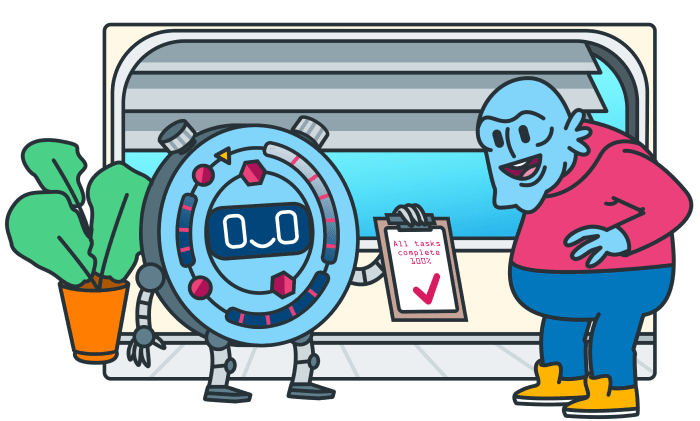
For example, when you download Clockify’s browser extension, you can simply start and stop the timer whenever, and it gets logged. Or, if you want to track activities outside of your computer, you can use the mobile app.
By tracking every single task you tell it to, a time tracker logs your entire day’s work, eliminating all the tedious legwork. And it is much quicker and more precise than writing it down on paper or a spreadsheet.
Then, at the end of the day, you can look at how your day went, the tasks you did or didn’t do, and how your entire week went. And when you introduce labels, categories, projects, and time estimates, there’s no end in sight to how precise you can go. In fact, all that data can be neatly presented in a visual graphic, printed, and pasted to a journal of your progress.
And yes, our advice would be to also consider journaling your productivity improvement.
How to journal
Consolidate all the time tracking information into a journal of sorts. That way you can identify and recognize mistakes. Besides, retention is much better when information is written down, rather than just remembered.
The idea of taking notes about your productivity every day will not sound appealing. However, the best part is that you can be as bare-bones or as detailed as you want. Journals can be customized to your heart’s content because, after all, you are writing it for yourself.
- Digital journaling
- Bullet journals (handwritten)
- Scrapbook journaling (for the visual types and those needing a more aesthetic approach)
How to analyze results
This step isn’t as complicated as you may think. It comes down to simply observing your goals, and your daily progress.
You can compare times in which it takes you to complete tasks, how many times per day you were distracted, how well you handle interruptions, etc. You can set a cut-off period, after which you look at the progress and revise any approaches.
For example, every week you draw out the results from your daily schedules (how quickly or how many tasks you performed per day), and every month you compare those weekly results. Or, you can compare the kinds of distractions and interruptions you’ve had, how often they appeared and how long they lasted.
Step Seven: “Rinse and repeat”
Last, but not least – be prepared to repeat the process daily. For weeks and months. Many people approach productivity improvement as if it is a one-time investment. However, like any other habit you want to build, it takes time and above all – patience.
Look for motivation in successful people you follow, research their routines and advice. Read books that speak to the kind of productivity improvement you strive for: whether it’s to work less and still produce quality work, or to use all of your time in the best way possible. Treat productivity as an investment into a lifetime skill that will benefit every other aspect of your life.
In summary
No one is born more or less talented in productivity. It is a learned skill. Something that requires plenty of time, patience, trial and error, and kindness to oneself. We’ve set out to give you a perspective on productivity that might help dispel its vague concept. After all, it’s not just the ratio of input to output – in our personal lives and careers, it is a collection of skills to be used to work better, faster, and more mindfully.
